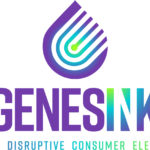Electronics is one of the industrial sectors with the greatest impact on the environment in terms of CO2 emissions and waste. Since 2020, the government « France Relance » plan has been
In-Mold Electronics eliminate additional weight and post-processing operations by allowing parts to be directly included in the electronic circuitry during the molding cycle. It combines In-Mold Decorating (IMD) technology with Printed Electronics. Benefits include enhanced manufacturing productivity, overall system cost reductions and greater design flexibility. Designers like the technology as it allows them to eliminate the buttons and multiple layers involved in the assembly of conventional electro-mechanical switches and to replace them with pre-integrated plastic parts. The results are highly functional, lightweight, and aesthetic parts.
Typically, an In-Mold Electronics application starts with the screen printing of a PC or PE film with its decorative design. On top of that, conductive and dielectric inks are screen-printed. Once cured, the printed films are thermo-formed into a 3D shape. The 3D forms are then placed in an injection mold where resin is injected behind it. The final part is a rigid plastic component with functionality. Surface mounted components such as connectors or LEDs are added after the forming and molding operations to increase the functionality of the part. GenesInk’s SmartInk requires no compromise between thermoformability and conductivity.








